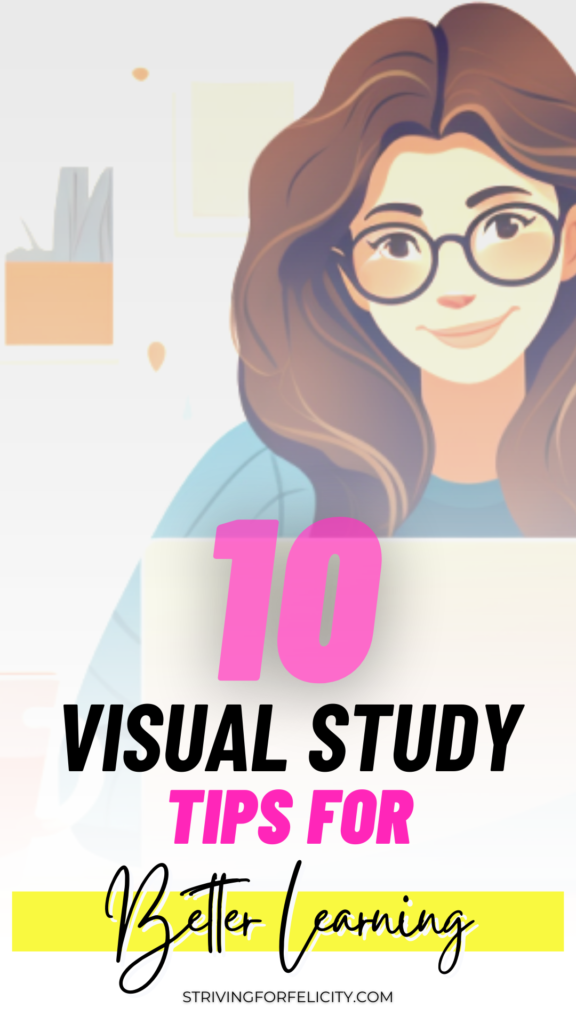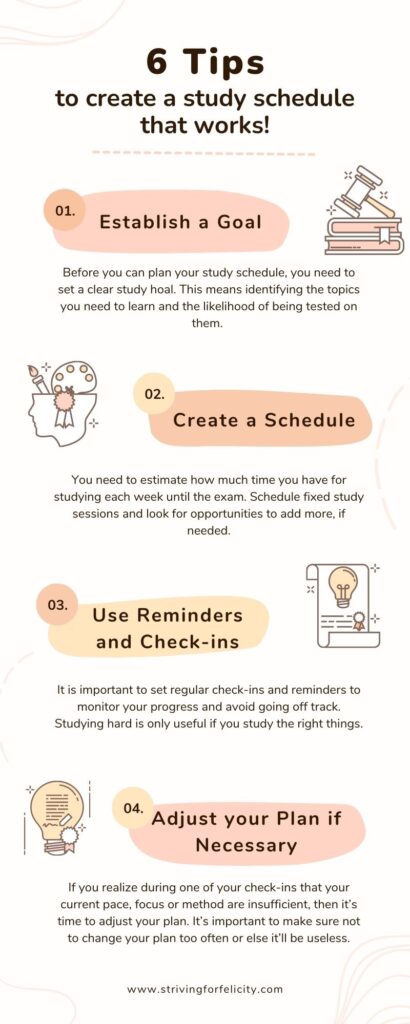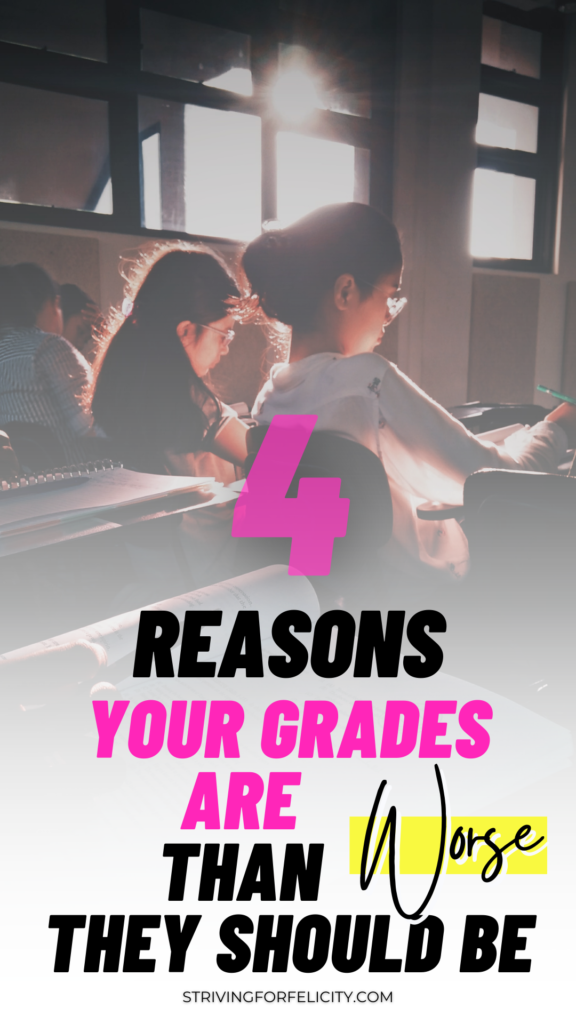Studying can be daunting, but it doesn’t have to be. Visual learning has become increasingly popular in recent years, and for good reason. Our brains are wired to process visual information quickly and efficiently. By incorporating visual learning strategies into your study routine, you can retain information better and ultimately boost your exam scores. This article will explore 10 visual learning study tips to help you learn more effectively.
From mind mapping to using flashcards, these tips will not only make your studying more engaging but also more enjoyable.
So, whether you’re a visual learner or just looking to switch things up with your study routine, keep reading to discover how to make the most out of your study sessions.
Read also: 4 Reasons You Have Low Grades Even Though You Are Not Stupid
Read also: 8 Student Challenges Unraveled: Tips for Academic Success
The Science Behind Visual Learning
Visual learning involves the use of visual aids to help us understand and remember information. Our brains are naturally wired to process visual information more quickly and efficiently than text or auditory information.
According to research, visual aids can improve learning and retention by up to 400%. This is because visual aids help us to create mental images of the information we are trying to learn, making it easier to remember.
So, in a way, all of us are visual learners. Just because you are not fond of mindmaps (I feel you there), doesn’t mean other techniques won’t work for you.
Benefits of Visual Learning in Studying
There are several benefits of incorporating visual learning into your study routine. Firstly, visual aids can help you to organize information more effectively. By creating diagrams, charts, and mind maps, you can see how different ideas and concepts are connected, making it easier to understand and remember the information.
Secondly, visual aids can help you to identify key information quickly. With the use of color coding and highlighting, you can highlight important information and make it stand out from the rest.
Lastly, visual aids can help you to stay engaged and motivated while studying. By using videos, animations, and graphic organizers, you can make studying more enjoyable and less monotonous.
The Downsides of Visual Study Techniques
Yes, there are also downsides to the visual learning study tips that you are about to discover.
The most important but often neglected downside is the time and effort of creating your study aids. You might have enough time on your hands for pretty study aids while you are in school. But for many college students, time feels much more limited given the increase of information they have to learn.
So when you try out any of these visual learning study tips, always keep an eye out for the value-to-effort ratio. Good grades are not gained through study preparation but rather through actual studying.
So don’t lose yourself in beautifying your study tools; instead, keep the creation as brief as possible and move on to taking advantage of the visual effects.
Visual Learning Study Tips
Tip #1: Mind Maps
Mind maps are a great way to organize information visually. They are a type of diagram that allows you to visually organize information around a central theme.
To create a mind map, start by writing the central theme in the center of a blank page. Then, draw branches out from the center and write down related ideas on each branch. You can then draw sub-branches from each idea and add more detail.
Mind maps are great for studying because they show how different ideas are connected.
BONUS: There are many websites and apps with which you can create those mind maps digitally. This speeds up the process since you don’t have to worry about formatting or editing.
Tip #2: Flashcards
Flashcards are a classic study tool that is still popular today. They are a quick and easy way to memorize information.
To create flashcards, write a question or key term on one side of a small piece of paper or index card and the answer or definition on the other. You can then shuffle the cards and test yourself on the information.
If you study for different subjects, consider getting flashcards in different colors, e.g., blue for math, white for chemistry, and green for English.
Flashcards are great for studying because they are portable and can be used anywhere.
BONUS: Try out digital flashcards. You can either create them yourself on apps like Anki, buy a premade set, or see if someone has created a set of flashcards on websites like Quizlet. I know digital studying takes a while to get used to and is, on paper, a bit less effective than writing and holding physical notes. But they can be life-saving, especially for information-heavy subjects like medicine or law. They enable you to study anywhere without carrying a bunch of flashcard boxes with you. Also, they make spaced repetition much easier, which is one of the most effective study methods. Just make sure to not put too much information onto one flashcard. That makes them much harder to study.
Tip #3: Color Coding
Color coding is a visual learning technique that involves using different colors to highlight important information.
To use color coding, choose a different color for each type of information; for example, use red for key terms, green for examples, and blue for definitions. This will help you to quickly identify important information while studying.
But be careful! Using too many colors will only confuse you. Keep it minimalistic.
Tip #4: Infographics
Infographics are a visual representation of information that combines text, images, and data to convey complex information quickly and clearly. They are a great way to learn and remember information because they are visually appealing and easy to understand.
There are many infographics available online for a wide range of subjects, or you can create your own using free online tools like Canva.
Tip #5: Diagrams and Flowcharts
Diagrams and flowcharts are visual aids that can help you to understand complex processes and systems. They are useful for subjects like science, math, and engineering.
To create a diagram or flowchart, start by drawing a simple outline of the process or system. Then add more detail and connect the different parts using arrows or lines.
Once again, there are many websites and apps that can make this process easier.
Tip #6: Videos and Animations
Videos and animations are great for visual learners because they combine audio and visual information to create a more engaging learning experience.
There are many educational videos and animations available online for a wide range of subjects.
Tip #7: Sketchnotes
Sketchnotes are a type of visual note-taking that involves creating a combination of text and images to capture key ideas and concepts.
To create sketchnotes, start by writing down key ideas and concepts. Then, add images, doodles, and color to make the notes more visually appealing. Sketchnotes are great for studying because they are a fun and creative way to take notes.
Just keep in mind that your notes are for studying and not for winning an art competition. Efficiency matters more than prettiness.
Tip #8: Visual Mnemonics
Mnemonics are memory aids that help you to remember information. Visual mnemonics use visual imagery to help you remember key information.
For example, to remember the periodic table, you could create a visual story of objects that remind you of the elements in the order they are listed. For example, imagine a red fire hydrant (Hydrogen) onto which a helium balloon is tied (Helium), and the balloon is the shape of a gigantic batterie (Lithium), etc.
Visual mnemonics are great for studying because they are a fun and creative way to remember information.
This method works incredibly well over long periods of time. But coming up with the right images can be quite difficult in the beginning, depending on how practiced you are with visualization and creative thinking and depending on how abstract the information is.
Tip #9: Graphic Organizers
Graphic organizers are visual aids that help you to organize information in a structured way. They can be used for note-taking, brainstorming, and essay planning. There are many types of graphic organizers, including Venn diagrams, timelines, and concept maps. Graphic organizers are great for studying because they help you to see how different ideas are connected and can help you to plan and organize your writing.
Tip #10: Visual Summaries
Visual summaries are a great way to review and remember information. They involve creating a visual representation of key ideas and concepts. To create a visual summary, start by identifying the key ideas and concepts. Then, create a visual representation of each idea and connect them using arrows or lines. Visual summaries are great for studying because they allow you to quickly review and remember key information.
Conclusion
Visual learning is a powerful tool for studying. By incorporating visual aids into your study routine, you can improve your learning, retention and ultimately boost your exam scores.
Whether you prefer mind maps, flashcards, or videos, there are many visual learning strategies that you can use to make studying more engaging and enjoyable.
So, the next time you’re studying, try incorporating some of these visual learning tips and see how they can help you to learn more effectively.
Also, comment down below and share with us which of these study techniques works the best for you!
Until next time, Felicity Seeker!














